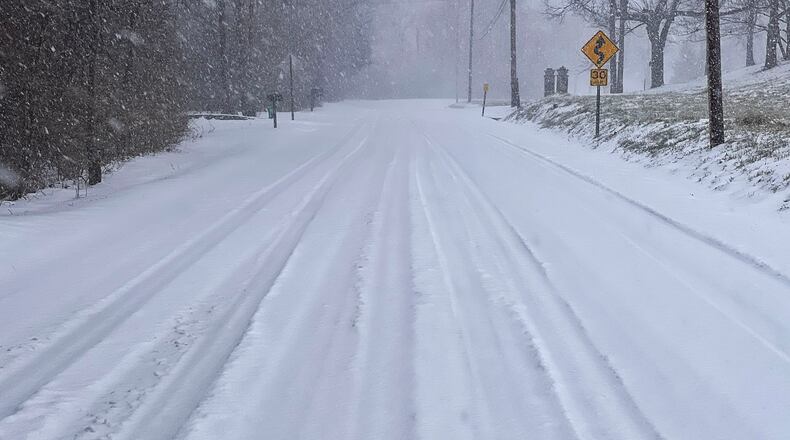“It has historically been that way, because if you’re a CDL holder, you have a lot more options in Butler County than you do in Vinton County,” Bruning said. “We’re competing with all of those other entities that have jobs that employ CDL drivers and the pool of jobs is much bigger than the pool of job seekers.”
ODOT has localized, multi-county districts that are responsible for hiring enough workers to clear the roadways that the state is responsible for — totaling around 43,000 miles throughout the state. Here in southwest Ohio, the region is broken up into District 7 and District 8.
Each year since 2019, District 7 — which covers Montgomery, Clark and seven other counties — has only been able to fill about 50% of its desired seasonal positions, said District 7 Business & Human Resource Administrator John O’Brien.
This year, the goal is 50 seasonal workers, but so far, only 10 positions have been filled. O’Brien said an increasing demand of CDL holders and a stagnant supply of actual CDL holders means the labor market is stretched thin.
“It’s just getting tougher and tougher to find folks who want to do this work,” O’Brien said.
But, this problem isn’t new to Ohio, and ODOT has been coping with this aspect of a labor shortage for a few winters now. Bruning said a labor shortage won’t stop the department from meeting its obligations, but suggested that residents might have to alter their expectations regarding snow removal.
“The key takeaway for Ohioans is to know that we will absolutely take care of all 43,000 lane miles across the state that we are tasked with taking care of,” Bruning said. “What you might notice is that it might take a little longer to get that job done.”
Bruning said ODOT grades itself on its ability to service major roadways within two hours of the end of a snow event. The aim is to make roads “passable, not perfect” while snow is still falling, he said.
Drivers will still need to slow down, Bruning said, but they’ll be able to get where they’re going.
ODOT grades itself on its ability to make major roadways passable within two hours of the end of a snow event — drivers on Interstate 75 might need to slow down, but they’ll still be able to get to where they’re going.
“We hit that goal 99% of the time last winter, even though we were short-staffed,” Bruning said. “Our men and women are the best at what they do, they’ll get the job done. Just, in some cases, it might take longer to get that job done, simply because of a man-power issue.”
ODOT has coped with labor shortages during intense snow events by pulling from several different pools of employees. Up first are the department’s highway technicians, CDL-holding year-round employees; then comes seasonal hires, CDL holders that are guaranteed 40 hours of work within the department; and then there’s the auxiliary drivers — anyone else within the department who might have a CDL, whether it’s an engineer, inspector, PR team member or manufacturer.
ODOT has coped with labor shortages during intense snow events by calling upon department workers who just so happen to be CDL holders. Bruning said any employee within the department, whether it’s an engineer, inspector, sign manufacturer or even a public relations specialist, can drive a plow when it’s really needed, as long as they hold a CDL.
“When we get a really intense snow event, they may be called in to help supplement our crews,” Bruning said.
Districts also have created a new position they call the “highway maintenance worker,” which will take CDL-less hires and gradually train them for their CDL certification so they can operate a plow next season.
Kathleen Fuller, a spokesperson for ODOT District 8 covering Butler, Warren, Hamilton and four other counties, said the department “saw the need” to create more foot-in-the-door opportunities for people potentially looking to make this a career.
“We know that not everyone has a CDL, so we’ve gone back to giving the highway maintenance position so that we have opportunities available for people that don’t hold a CDL,” Fuller said. “And then we can work with them to get that CDL. We can get them the course work and the training that they need.”
About the Author

